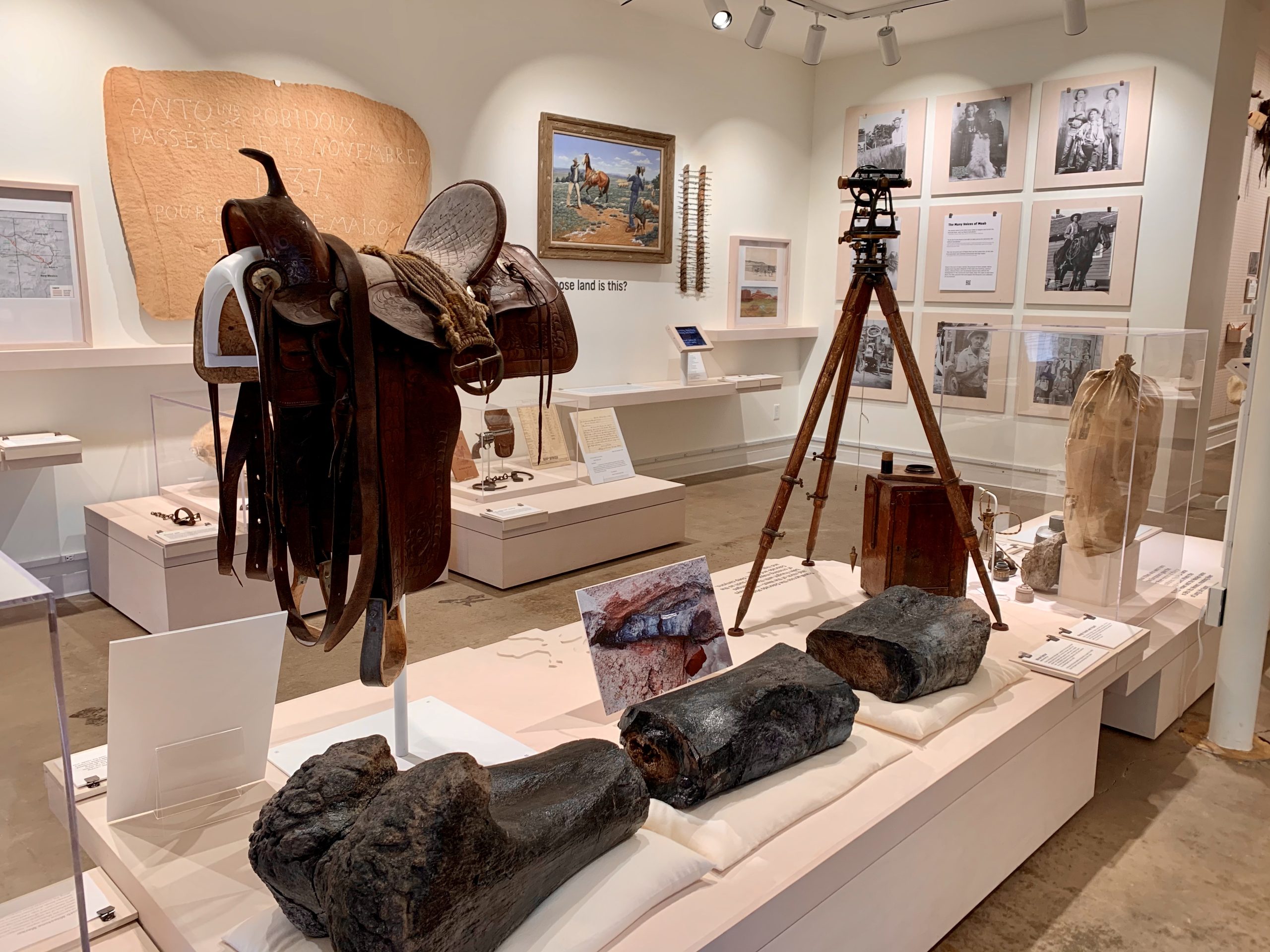Some information may be outdated.
Visitors will find a brighter, more spacious exhibit space at Moab Museum, which reopened to the public on June 1 after being closed for nearly three years – first for renovations, then because of the pandemic.
The stairwell that used to be in the center of the room was removed, creating a larger display area on the first floor. The second floor is now used for staff offices and also houses the research library. Pegboards have been installed on the museum’s back walls where temporary exhibits are displayed, as well as a place for notes for visitor comments.
The museum’s current temporary exhibit “The Transcontinental Railroad” comprises two collections from the Utah Division of Arts and Museums – “A World Transformed: The Transcontinental Railroad in Utah,” and “Through Toil and Labor: The Forgotten History of Utah’s Chinese Railroad Workers.”
“The Transcontinental Railroad” includes photographs, lithographs and artifacts and is supplemented with objects from the museum’s own collection, to “expand the story and tie it more to the Moab community,” said community relations officer Mary Langworthy. The Transcontinental Railroad” exhibit will be up through fall 2021.
“It was a stroke of genius of the designers to put a pegboard on the back walls,” which has allowed for flexible temporary exhibits, said Barb Webb, president of the museum board of trustees.
The museum hired Renate, an Oregon design firm to help with the museum’s new redesign of its exhibition area. The company previously worked on the Natural History Museum in Salt Lake City.
The redesign “allowed us to understand what we had, and what needed to be updated, and to better tell the stories we wanted to tell,” Webb said. “We want to share the truly amazing stories of Moab area and its people. All aspects of the museum are refreshed and updated.”
The museum’s permanent collection tell both the human, and natural history stories of the area, Langworthy said. The human history includes indigenous people, settlers and pioneers, as well as the influence of agriculture on the community, followed by the uranium boom, and then the tourism boom which continues today.
“The museum is small, but the stories are big,” Webb said. “We’re trying to expand beyond our physical walls.”
Those efforts include expanded web site offerings where people can “dive deeper” into topics featured at the museum, she said. There are also plans to offer programs at other locations.
Tuesdays at the Museum, where experts present on various topics, is available via Zoom and Facebook in the spring and fall.
Webb is especially excited about the museum’s digitalization of the late Fran Barnes’ photo collection donated by his wife Terby who died in 2008. The couple traveled and documented lands surrounding Moab from the 1960s-1990s, before tourism exploded in the region. Barnes also wrote guidebooks of the area, including about hiking, four-wheeling, dinosaurs, and geology at a time when there weren’t many guidebooks, Webb said.
“Fran Barnes was one of the first citizen scientists,” Webb said. “He explored everything; He was an amazing person.”
Located at 118 E. Center St, Moab Museum welcomes memberships which offer unlimited admission, invitations to special member events, and updates of what staff is working on behind the scene.
“Members empower us to continue to tell stories, host new exhibits, and do community outreach,” including school field trips, Langworthy said.
Summer hours are Tuesday-Saturday, noon to 8 p.m. Admission is $10 for adults; $8 seniors, children and active-duty military; $30 for a household or family. Children 7 and under are free. Masks are required at the county-owned building. For more information visit: moabmuseum.org.
Infobox:
What: Visit the Moab Museum
Where: 118 E. Center Street, Moab
When: Tuesday through Saturday from noon to 8 p.m.
Admission is $10 for adults; $8 for seniors, children and active-duty military; $30 for a household or family. Children 7 and under are free.
For more information visit www.moabmuseum.org.
Appreciate the coverage? Help keep local news alive.
Chip in to support the Moab Sun News.





